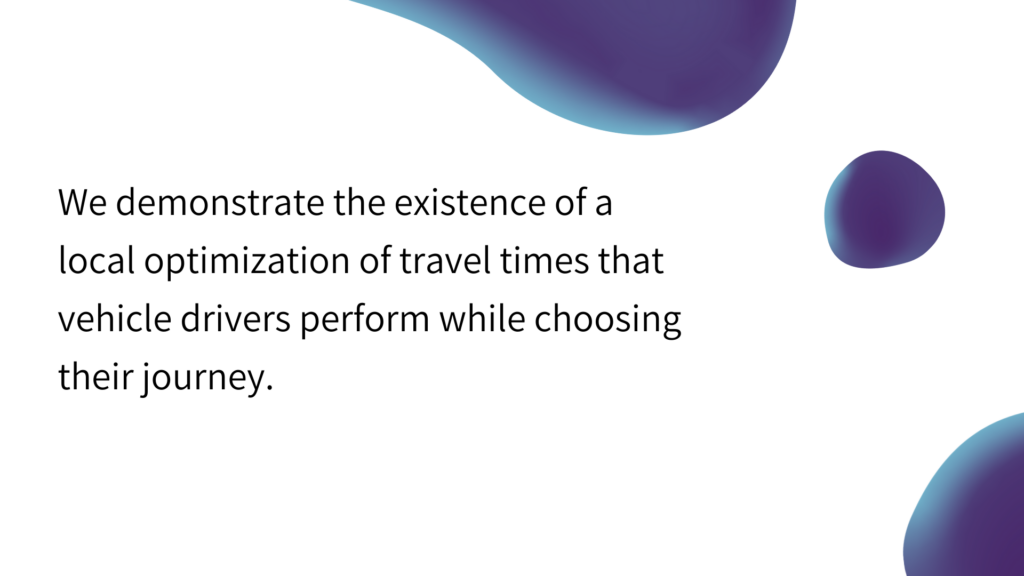The comprehension of vehicular traffic in urban environments is crucial to achieve a good management of the complex processes arising from people collective motion. Even allowing for the great complexity of human beings, human behavior turns out to be subject to strong constraints – physical, environmental, social, economical – that induce the emergence of common patterns. The observation and understanding of those patterns is key to setup effective strategies to optimize the quality of life in cities while not frustrating the natural need for mobility. In this paper we focus on vehicular mobility with the aim to reveal the underlying patterns and uncover the human strategies determining them. To this end we analyze a large dataset of GPS vehicles tracks collected in the Rome (Italy) district during a month. We demonstrate the existence of a local optimization of travel times that vehicle drivers perform while choosing their journey. This finding is mirrored by two additional important facts, i.e., the observation that the average vehicle velocity increases by increasing the travel length and the emergence of a universal scaling law for the distribution of travel times at fixed traveled length. A simple modeling scheme confirms this scenario opening the way to further predictions.


